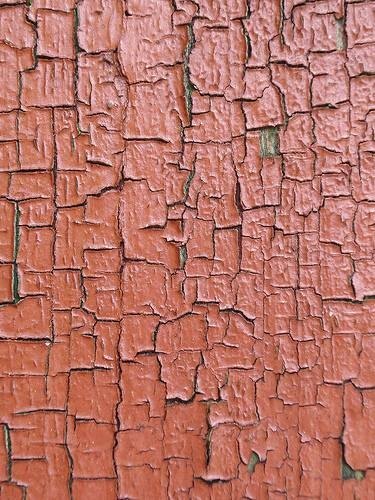Things You'll Need
Old newspapers
Rubber gloves
Safety goggles
Semi-paste stripper
Clean glass jar
Natural bristle paint brushes
Paint scraper or putty knife
Stiff brush with brass or natural bristles
Steel wool
Lacquer thinner
Rags
Medium-fine-grit sandpaper

Crackle paint is a faux painting technique that creates a distressed looking finish with the appearance of old paint layers. You might have wood cabinetry, furniture or molding decorated with this paint technique but what happens when you get tired of the look? Unlike smooth surfaces that you can prepare for a new layer of paint with a minimum of fuss, crackle paint has an added medium which prevents easy refinishing. You need to know how to remove crackle paint to effectively prepare a surface for new paint.
Step 1
Prepare your work area before attempting to remove the crackle paint. If you are working indoors, you will need a well-ventilated area with open windows and fans to increase airflow. Removing the crackle paint outdoors is preferable if possible. Spread at least five layers of newspaper over your intended work area to catch any drips from the semi-paste stripper before starting the paint removal process .
Video of the Day
Step 2
Wear long pants and a long sleeved shirt along with your rubber gloves and safety glasses as protection before opening the semi-paste stripper. This paint remover is caustic and can burn your skin. Pour a small amount of the semi-paste stripper in a glass jar so it is easier to work with and refill as needed.
Step 3
Apply a thick layer of the semi-paste stripper with a natural bristle paint brush to the crackle paint surface. Work one small area at a time, brushing on the stripper in a single direction. Repeat the application of the semi-paste stripper until the entire crackle paint surface is covered.
Step 4
Allow the semi-paste stripper to soak into the item's crackle paint surface for 10 to 30 minutes. The surface will take on a blistering, wrinkled appearance, a sign that the stripper is dissolving the crackle paint.
Step 5
Scrape the treated surface with a paint scraper or putty knife, angling the handle towards your body to avoid denting or gouging the surface with the blade. Remove all the dissolved crackle paint that you can, depositing it onto the newspaper. If some painted areas do not dissolve with the semi-paste stripper, re-apply the stripper to those areas and allow them to dissolve before scraping again.
Step 6
Use the stiff brush to scour the cracks and crevices the paint scraper or putty knife could not reach. Tap or shake the removed crackle paint from the brush onto the newspaper.
Step 7
Apply a fine layer of lacquer thinner to the item's surface, one small section at a time, using steel wool to buff the areas. Do this only if the semi-paste stripper has removed as much crackle paint as possible. The lacquer thinner will remove residue left behind from the paint stripper.
Step 8
Wipe the treated surfaces with clean rags and allow to dry overnight. Lightly sand the surface to remove any traces of lacquer thinner and semi-paste stripper. Brush off sanding residue with a clean rag. The surface is now ready for new paint.
Tip
Allow the removed crackle paint deposited on the newspaper to dry thoroughly before throwing it away. Because the semi-paste stripper is caustic, the wet, dissolved remains could ruin your garbage can. Throw away the paint brushes, rags and steel wool used during the crackle paint removal process. You can salvage the stiff brush and glass jar by cleaning with the lacquer thinner to remove any semi-paste stripper first before rinsing with water and drying.
Warning
Do not use synthetic paint brushes to apply the semi-paste stripper. The stripper will dissolve the synthetic material.
Video of the Day